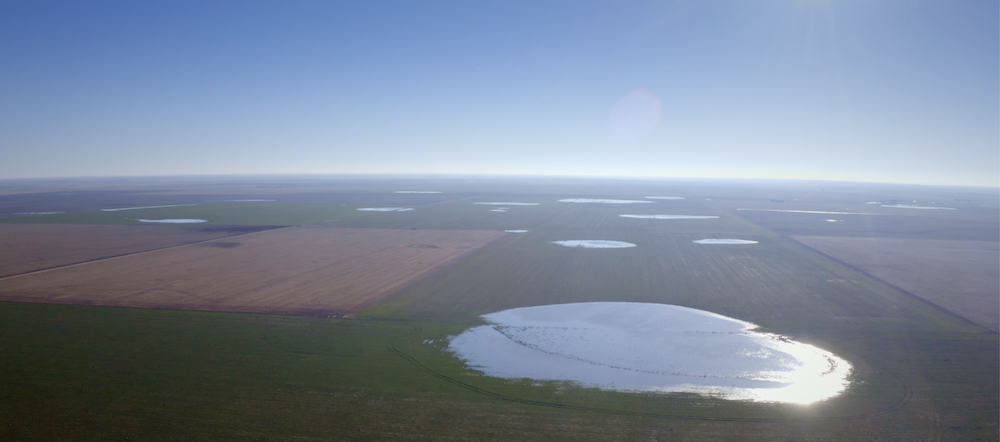Bids are now being accepted for a U.S. Department of Agriculture program designed to provide landowners a market-based financial incentive for restoring playa wetlands.
The Kansas USDA Farm Service Agency and several partners are joining together to promote the Conservation Reserve Program Migratory Birds, Butterflies and Pollinators State Acres for Wildlife Enhancement practice, or CRP Migratory Birds SAFE for short.
Playas are round, shallow depressions found at the lowest point of a watershed that often fill with water after rainstorms. Restored, healthy playas improve water quality, increase groundwater recharge, and enhance habitat for migrating waterfowl, cranes and shorebirds, as well as resident wildlife, butterflies and other pollinators.
A healthy playa has an intact clay basin—without excavated pits or ditches—that is not buried by sediment from nearby fields. Water from the surrounding watershed freely enters the basin through a native vegetative buffer without being diverted from the playa by roads, terraces or other impediments.
The Migratory Birds SAFE program uses a competitive bid process. Landowners submit an offer to enroll their playa acres into the program for an amount they are willing to accept as an annual payment and contracts are for periods of 10 to 15 years. Additional incentives may be available for signing up and for cost-share associated with restoration activities.
Offers should be somewhere between the NASS county-level dryland and irrigated cropland rental rates and are only eligible on playas within the designated areas. Counties with designated areas include Cheyenne, Clark, Finney, Ford, Graham, Grant, Gove, Gray, Greeley, Hamilton, Haskell, Hodgeman, Kearney, Lane, Logan, Meade, Ness, Rawlins, Scott, Seward, Sheridan, Sherman, Stevens, Thomas, Wallace and Wichita.
Offers compete within one of three designated areas and no more than 50% of the offers from one area will be accepted during each ranking period. Offers are ranked on financial and ecological factors, including relative bid amount, size of playa, and thickness of the underlying aquifer.
The minimum enrollment per offer is two acres, and the maximum enrollment per offer is 160 acres. Offers can be submitted on a continuous basis, and will be periodically reviewed and ranked, followed by contracts being offered. To be considered in the first ranking period, offers must be submitted between now and Feb. 18, 2022.
Offers that aren’t successful during the current round can be carried over for consideration during the next round, or can be revised and resubmitted.
Playa Lakes Joint Venture developed a Playa Land Use Calculator which can help landowners create a competitive bid that meets their objectives. The calculator helps determine the amount needed to enroll a playa, instead of farming it, and estimate playa restoration costs. It also shows how much water could be sent back into the groundwater supply and other benefits of playa restoration. Landowners can enter their own field details or use defaults to get a ballpark figure to help determine their bid amount, and compare good and bad years by adjusting crop prices, crop types, expenses and how often crops are lost.
The Natural Resources Conservation Service and partners provide technical assistance to landowners, while the offer is submitted through the Farm Service Agency. Additional information is available at a local USDA Service Center to start the conversation about this program. Private lands biologists from Ducks Unlimited, Kansas Department of Wildlife and Parks, Pheasants Forever, and Playa Lakes Joint Venture can also assist landowners considering enrolling their playas in the Migratory Birds SAFE or other conservation programs.
Learn more about playas and the benefits they provide, download the Playa Land Use Calculator, or find private lands biologists and USDA Service Centers by visiting PlayasWorkForKansas.com.




